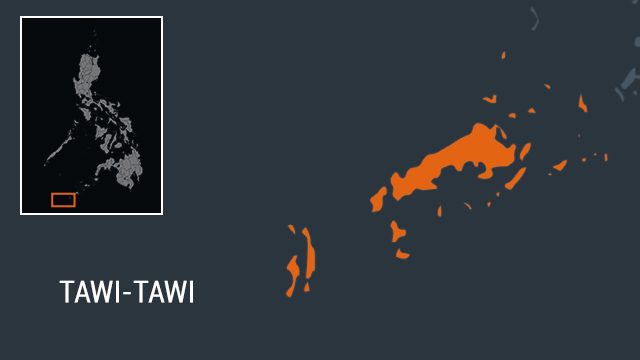SUMMARY
This is AI generated summarization, which may have errors. For context, always refer to the full article.

BONGAO, Tawi-Tawi – Government agencies here have intensified their campaign against trafficking in persons (TIP), which has become a top international issue and a regional concern.
Thousands of Filipinos are using Tawi-Tawi as the “backdoor” entry point to enter Malaysia illegally.
Police Inspector Elmira Relox, chief of the Provincial Police’s Women and Children Protection Desk said that the Provincial Inter-Agency Council Against Trafficking (PIACAT) rescued 387 persons in 2014, and up until November 2015, 396 persons.
Romualdo Seneris, regional coordinator for Central Visayas of the Visayan Forum Foundation, a non-governmental organization campaigning against human trafficking, said that on an average, at least five people enter Malaysia each day.
Meanwhile, Malaysia deported 8,158 persons in 2014 and 9,441 this year, including those who were trafficked.
Lawyer Milagros Isabel Cristobal, Women Sector Representative on the board of the Philippine Overseas Employment Administration, reported that the Philippine government is making significant efforts to comply with the requirement of the United States Trafficking in Persons Act.
In the global scenario, it is estimated that 2.5 million people from 127 countries are trafficked annually, according to data of the United Nations Global Initiative to Fight Trafficking (UN-GIFT).
“Fifty-six percent of global human trafficking are happening in Asia Pacific, to which the Philippines is part,” Cristobal said.
TIP has morphed into a global enterprise worth an estimated $32 billion, and is related to the illegal drugs and guns trade.
Seneris said that 98% of those trafficked in Tawi-Tawi are women who are exposed to sex trade, bondage labor, and drug running.
The United Nations Office on Drugs and Crime (UNODC) said sexual exploitation is the most common form of human trafficking at 78%, followed by forced labor at 18%.
Most of the victims are hired as waitresses, Guest Relations Officers, or household and plantation workers.
The Philippines is a source country, while Tawi-Tawi serves as the transshipment point for most trafficking cases. (READ: How to report suspected cases of human trafficking)

They would enter Malaysia without any passport, working visa or any documents.
“The traffickers are using the islands in Tawi-Tawi as the main staging points for the entry into Malaysia,” Seneris said.
Cristobal showed that the top destination for undocumented Filipino workers are Malaysia, Singapore, Macau, Italy, UAE, Saudi Arabia, Kuwait, Israel, Italy, France and the USA.
“After they enter into Malaysia, some would just disappear and some would fly out from there,” Seneris said.
The human trafficking route
Seneris and Cristobal revealed a highly organized and funded trafficking route starting in Metro Manila where victims are housed and taught what they needed to do.
The human traffickers use the internet and mobile phones to plan and deliver the victims.
The victims are transported by plane or by land from Manila all the way to Zamboanga City, where they would then travel to Bongao via boat.
Tawi-Tawi consists of 106 islands across Sulu, making it almost impossible for law enforcement to stop all trafficking activities.
From Bongao, the victims would be taken to any of the islands, with Sitangkay and Turtle Island near the Municipality of Mapun, just 20 kilometers away from Sabah, as the main exit points to Malaysia.
“The traffickers are using social media to recruit and coordinate the trafficking and most of the time, the victims do not know who are the recruiters,” said Rosabella Delfinado, the Municipal IACAT coordinator of Bongao.
“Just last week, a 16-year-old girl was trafficked in Bongao and she was raped by her contact,” Delfinado said.
The MIACAT finds it difficult to trace victims. “Some of them are met on the seas. While the boat is still on the way to the port, they would jump into smaller boats and speed away,” Delfinado said.
Not all ships have marshals for law enforcement, so the MIACAT is tapping ship crew members to report any suspected human trafficking.
Lack of opportunities in PH
When asked why people would put themselves in harm’s way just to be able to work overseas, Cristobal said that the number one reason is economic gains.
“There is no or not enough opportunities here in our country and victims [think] that they will have better lives if they work overseas, even if it means going out illegally,” Cristobal said. (READ: Desire to work abroad exploited by human traffickers)
Seneris estimates that the cost of trafficking a single person to Malaysia would reach P30,000. “The victims [think] that they are going in for free, but in fact they have to pay for it even more.”
The risk of sexual exploitation is also high and the fact that the victims do not have any legal documents means that they may not be able to access government programs and services while overseas.
“Working illegally in other countries can both work for or against you,” Cristobal said.
No halfway house
While the MIACAT does all it can within its capacity, there is a need to establish a halfway house or rescue center to accommodate rescued trafficking victims.
In the current framework, victims are brought to the provincial police office, where they are temporarily housed. There, they often become guarded, feeling like they are the criminals.
Social workers would then help in the change of perspective and feelings of the victims.
“We have made them understand that they are being rescued and not arrested,” Delfinado said.
When will it stop?
Tawi-Tawi Governor Nurbert Sahali said that dealing with trafficking and deportation is one of the biggest challenges the province is facing.
“When will the deportation stop? It is not our fault that we are here in this place,” Sahali said.
While Tawi-Tawi wants to keep a good relationship with Sabah as 70% of their goods are from Malaysia, dealing with deportations and trafficking affects that relationship.
Having to deal with almost 10,000 deportation cases annually without support from the national government means that funds for other social services would be spent to support deportees.
Norzalina Alcala, who handles TIP cases for the Department of Social Welfare and Development, said that they sometimes have to personally spend for the food of the trafficking victims and other deportees because they have limited funds.
“Just the fare for bringing them to Zamboanga City alone is already costing us money,” Alcala said.
Some would even seek Sahali’s help for fare going back to Malaysia.
“There’s nothing we can do, we need to spend for this people, provide them with services, and almost all of them came from other provinces that we need to send them back,” Sahali
said.
Seneris said that there is a need to strengthen government institutions and coordination to address trafficking and the issue of deportation.
For an exit point, there is no presence of the Department of Foreign Affairs here and the POEA office is only manned by one person.
“Let’s face it: the numbers of deportees reflects the average number of people who enter Malaysia illegally–the trafficked women and children, and we have no support for them,” Seneris said.
He added that while there is a need to disrupt the trade route of human trafficking, there is also a need to address the economic reasons why people do it in the first place.
Cristobal also said government must review POEA rules and regulations to be responsive to the changing times.
“Increasing [the] penalty does not stop human trafficking, it does not lower trafficking incidents,” she added.
As for the law enforcement offices in Tawi-Tawi, the cat and mouse game continues, with the mouse often getting away from the chase, taking off in one of the 106 islands in the vast Celebes seas, disappearing like a mist into the island called Sabah. – Rappler.com
Add a comment
How does this make you feel?
There are no comments yet. Add your comment to start the conversation.